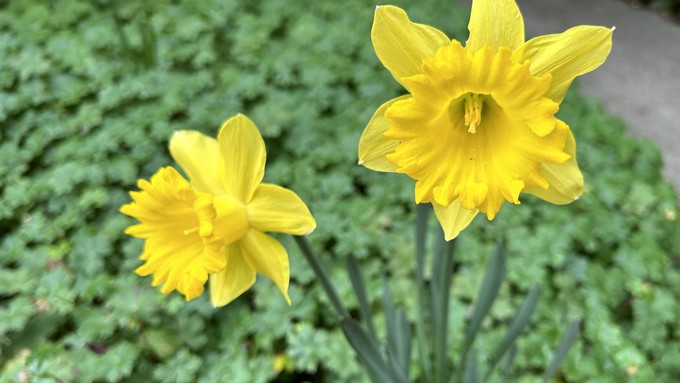
February has been very wet; warmer (and dry) weather is on its way

Expect to see more daffodils and other spring flowers during the warmer, drier days ahead. Kathy Morrison
Looking at my rain gauge, I keep thinking: Are we there yet? How much is enough?
It’s been another soggy few days in California with some places getting way wetter than usual, leading to mudslides and sinkholes.
Here in Sacramento, it’s just been really rainy. The latest pair of atmospheric rivers dropped 2.25 inches over the long Presidents’ Day Weekend including a record 1.14 inches in downtown Sacramento on Sunday, Feb. 18.
Through Feb. 20, Sacramento received 4.49 inches, according to the National Weather Service. That’s about 2 inches more than normal for that same time period.
But overall, our water year – Oct. 1 through Sept. 30 – is tracking just ahead of average. Since Oct. 1, Sacramento has totaled 13.67 inches of rain; normal for that period is 12.12.
Although our rain totals are above normal, we’re not there yet – “there” being a final rain total. Sacramento gets 19.2 inches in an average water year. We’re still more than 5 inches from that benchmark – but we have more than seven months to get there.
Despite another rainy February, this winter has been mild compared to 2022-23. That wet and wild water year totaled 26.22 inches in Sacramento, 36.5% above average.
Warmer, drier days are on their way. According to the weather service, Sacramento will get a sunny break from rain through at least Sunday night. Sacramento might even hit 70 degrees on Saturday.
Expect to see an abundance of daffodils as well as other spring blooms.
That spring-like weather will make it tempting to plant warm-season crops or move tomato seedlings outdoors – but don’t. Soil temperatures, hovering around 54 degrees, are still too chilly for summer vegetables. Soil needs warm nights as well as days before it warms significantly.
And more cold nights are in the forecast, says the weather service. Sacramento’s overnight lows will dip down to as low as 41 degrees by Tuesday (Feb. 27) with several nights this week in the low 40s.
Keep baby tomato, eggplant and pepper plants inside where they’ll appreciate the extra (and consistent) warmth.
For more on Sacramento weather: https://www.weather.gov/sto/#.
Comments
0 comments have been posted.Sacramento Digs Gardening to your inbox.
Sites We Like
Garden Checklist for week of July 21
Your garden needs you!
* Keep your vegetable garden watered, mulched and weeded. Water before 8 a.m. to reduce the chance of fungal infection and to conserve moisture.
* Feed vegetable plants bone meal, rock phosphate or other fertilizers high in phosphate to stimulate more blooms and fruiting. (But wait until daily high temperatures drop out of the 100s.)
* Don’t let tomatoes wilt or dry out completely. Give tomatoes a deep watering two to three times a week.
* Harvest vegetables promptly to encourage plants to produce more. Squash especially tends to grow rapidly in hot weather. Keep an eye on zucchini.
* Pinch back chrysanthemums for bushy plants and more flowers in September.
* Remove spent flowers from roses, daylilies and other bloomers as they finish flowering.
* Pinch off blooms from basil so the plant will grow more leaves.
* Cut back lavender after flowering to promote a second bloom.
* It's not too late to add a splash of color. Plant petunias, snapdragons, zinnias and marigolds.
* From seed, plant corn, pumpkins, radishes, winter squash and sunflowers.